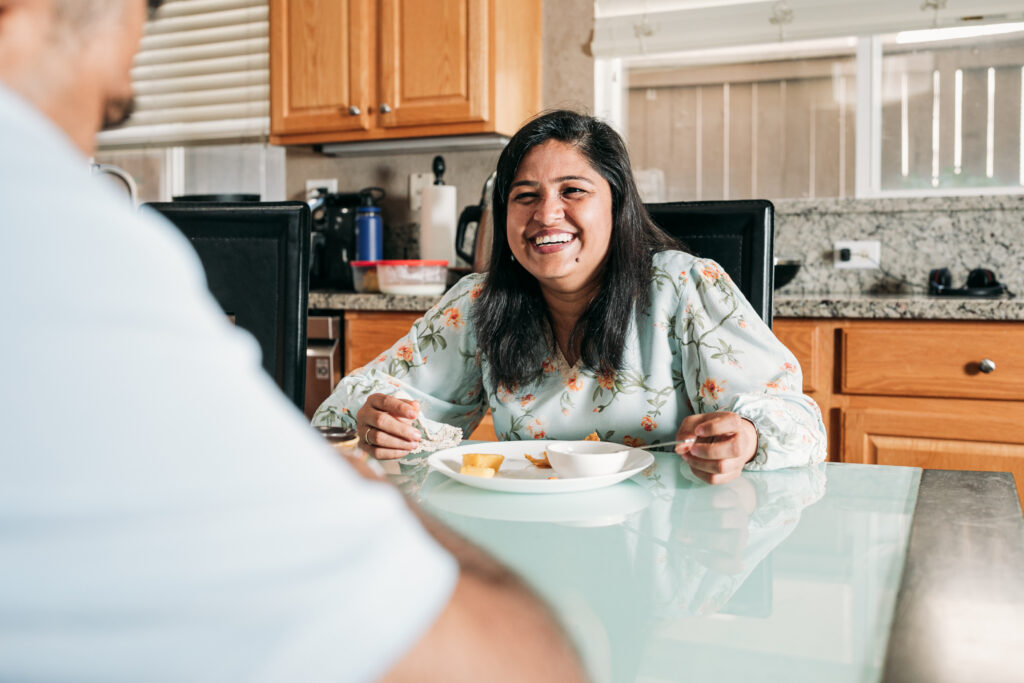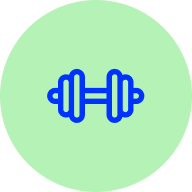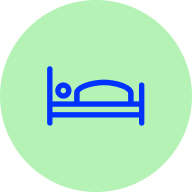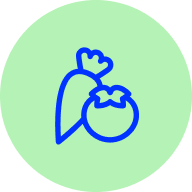Living with type 2 diabetes? You’re not alone.
Dealing with diabetes can be a challenge, but you can take control of your health by making little changes that add up to big improvements.

Take control of your health.
Managing diabetes is about balancing food, movement, stress and medication (if needed) to keep blood sugar levels steady. Here are some tips:

Stay active.
Aim for 30 minutes of physical activity most days; Try walking, doing yoga or dancing.1

Get enough sleep.
Try to get seven hours a night. Poor sleep can make blood sugar harder to control.2

Eat balanced meals.
Eating a variety of vegetables, different types of proteins and small portions of carbs can help stabilize blood sugar.3
What about medication?
Not everyone with diabetes needs medication. For some, however, it is key to keeping blood sugar stable. Type 1 diabetes means getting insulin through injections or a pump.4 Type 2 and gestational diabetes may need insulin, oral medication or other injectable medications, such as GLP-1s.5
Always take medications as directed. If you have concerns, talk to your doctor.
Elena’s story: Finding a new routine with type 2 diabetes
Elena had always been busy. Balancing work, family and social commitments left little time to think about her own health. She often grabbed meals on the go, skipped breakfast and ended her days feeling exhausted. When she started feeling constantly thirsty and noticed she wasn’t bouncing back from colds like she used to, she went to the doctor. The diagnosis: type 2 diabetes.
At first, she felt overwhelmed. “I thought diabetes meant giving up everything I enjoyed,” she says. “I didn’t know where to start.” But her doctor helped her take it one step at a time. Instead of a complete overhaul, she focused on small, manageable changes. She swapped sugary coffee drinks for unsweetened tea, started cooking more at home and made sure to take short walks throughout her day.
Checking her blood sugar became part of her routine, and over time, she noticed patterns. Like which foods gave her energy, what slowed her down and how movement made a difference. “I used to think I had to be perfect, but now I know that every little change adds up,” she says. “I’m still enjoying my favorite foods, just in a way that works for me.”
Now, Elena feels more in control. “Managing diabetes isn’t about restriction. It’s about finding balance. And once I found what worked for me, everything felt a little easier.”
This example is for illustrative purposes only. It’s not an actual Cigna Healthcare® customer experience.

Marcus’ story: Learning to live with type 1 diabetes
Marcus was 12 when he was diagnosed with type 1 diabetes. He had been feeling tired all the time, drinking a lot of water and losing weight without trying. His parents thought it was just a growth spurt. Then, one night, he felt so sick they had to take him to the emergency room. That’s when they learned his blood sugar was dangerously high.
“I remember hearing ‘diabetes’ and thinking, ‘Does this mean I can never have dessert again?’” Marcus says. “I didn’t really understand what it meant at first.”
The first few months were tough. He had to learn how to check his blood sugar, count carbs and give himself insulin shots. It was a lot to take in. “At first, I was afraid of messing up,” he admits. “I thought if I got it wrong, I’d get really sick.”
With the help of his parents and diabetes care team, Marcus started figuring out his routine. He got an insulin pump and a continuous glucose monitor (CGM), which made things easier. Plus, his doctor helped him learn how to balance his favorite foods with his insulin needs.
Now, as a high schooler, Marcus doesn’t let diabetes hold him back. He plays soccer, goes to sleepovers and eats birthday cake like any other teenager. He just makes sure to plan ahead. “At first, I thought diabetes was going to control my life,” he says. “But now I know I’m the one in control.”
This example is for illustrative purposes only. It’s not an actual Cigna Healthcare customer experience.

This information is for educational purposes only. It is not medical advice. Always consult your doctor for appropriate examinations, treatment, testing and care recommendations. Any third-party content is the responsibility of such third party. Cigna Healthcare® does not endorse or guarantee the accuracy of any third-party content and is not responsible for such content. Your access to and use of this content is at your sole risk.
Cigna Healthcare products and services are provided exclusively by or through operating subsidiaries of The Cigna Group.
- WebMD. “Exercise and Type 2 Diabetes.” Last reviewed January 25, 2025. https://www.webmd.com/diabetes/exercise-guidelines
- Hue SLW. “How patients with diabetes should manage their sleep.” Monash University. March 15, 2024. https://lens.monash.edu/@medicine-health/2024/03/15/1386484/how-patients-with-diabetes-should-manage-their-sleep
- American Diabetes Association (ADA) Nutrition & Wellness Team. “What is the Diabetes Plate?”. January 15, 2025. https://diabetesfoodhub.org/blog/what-diabetes-plate
- Cigna Healthcare. “Type 1 Diabetes.” Knowledge Center. Last reviewed April 30, 2024. https://www.cigna.com/knowledge-center/hw/medical-topics/type-1-diabetes-hw34303
- Cigna Healthcare. “Type 2 Diabetes.” Knowledge Center. Last reviewed April 30, 2024. https://www.cigna.com/knowledge-center/hw/medical-topics/type-2-diabetes-hw135189